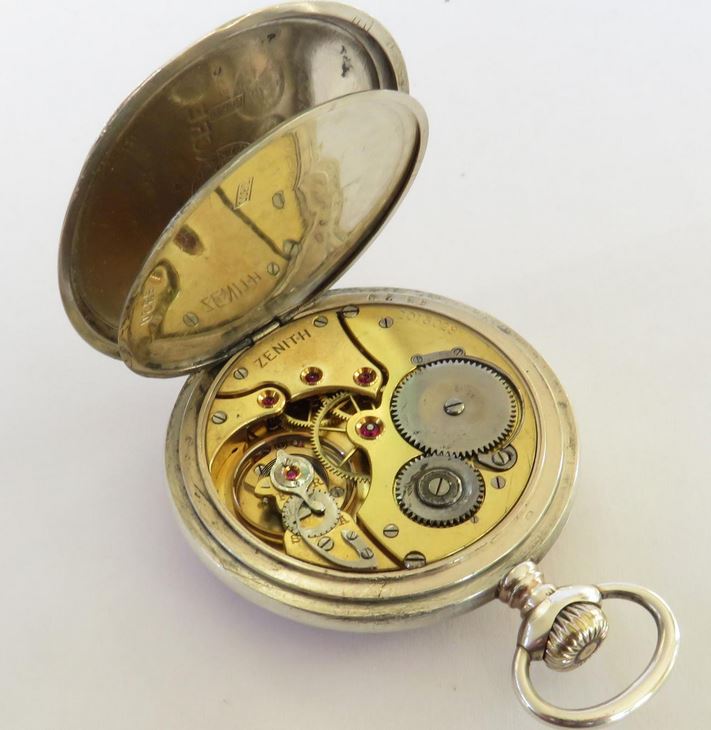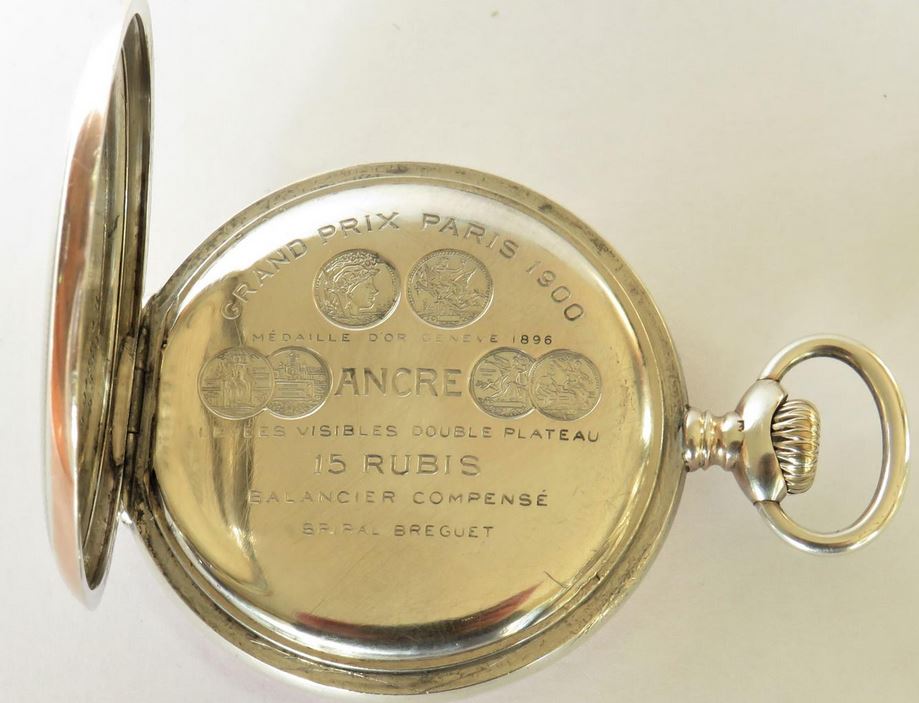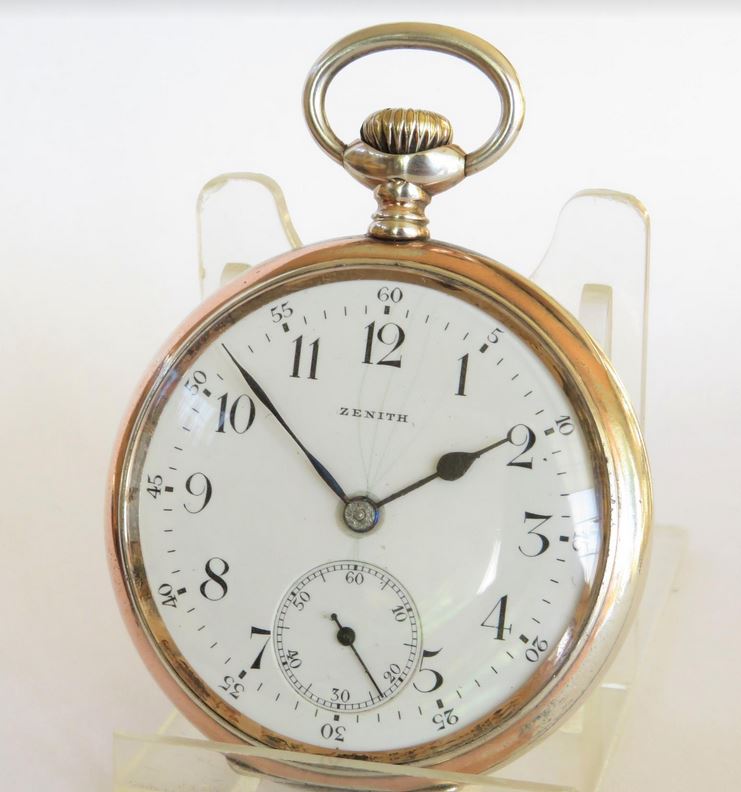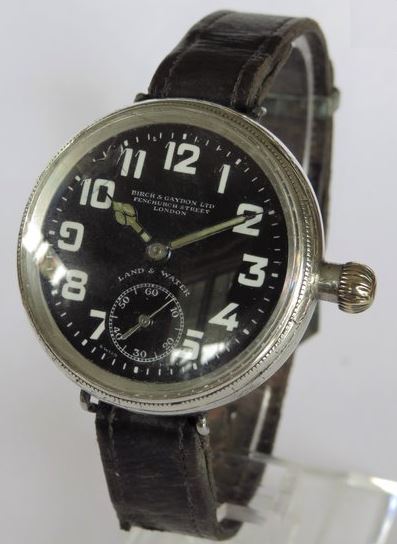Georges Favre-Jacot was born Georges-Emile Favre-Bulle in Le Locle on December 12, 1843, and died in 1917 at the age of 73. By the end of his life, he was an accomplished watchmaker and entrepreneur. He left school at the age of nine with the intention of learning a trade and he found himself apprenticed to a watchmaker. At the age of twenty, he married a watchmaker’s daughter, Louise-Philippine Jacot-Descombes, and it was then that he changed his name to Georges Favre -Jacot. The watchmaking company he formed ultimately became known as Zentih.
Origins
In 1865, Favre-Jacot, a 22-year-old watch apprentice, launched his own watch company in Le Locle, Switzerland. It wasn’t known as Zenith at the time, as the official brand name wasn’t registered until 1911. Favre-Jacot’s initial workshop was setup using the money from his wife’s modest dowry. It was called “Fabrique des Billodes” after the name of the district where it was located. In a few decades, the small workshop transformed into a large manufacturing complex, composed of several buildings, and dedicated to a centralised production system. During this period, he was observing the growth of the watchmaking industry in the United States where fully integrated factories have been built. He decided that this was the future of watchmaking.
Factory
At the time, watch craftsmen worked from different workshops and factories throughout the city. Once complete, the watch components were then transported from their respective locations to a watchmaker for finishing and assembly. This was a system known as établissage. However, Favre-Jacot decided to consolidate Zenith’s craftsmen and watchmakers under one roof and, in turn, create the first modern watchmaking factory in Switzerland. The factory was completed in 1881. The housing of all of the watchmakers under one roof facilitated the rapid transfer of ideas and knowledge, which allowed Zenith to make significant technological advances.
Favre-Jacot was instrumental in moving Swiss watchmaking into the industrial age. By manufacturing all watch components within the same factory and producing standardised parts he streamlined the manufacturing process. This meant he could produce interchangeable components to build a variety of different movements resulting in efficiencies and economies of scale.
Awards
Initially, Favre-Jacot focused solely on producing precision pocket watches. However, by the early 20th century, the company was expanding its range by introducing a series of related products. These included table clocks and pendulum clocks. Later on, it would delve into marine and flight chronometers, and, as a result of the First World War, trench watches. Favre-Jacot introduced his first pocket chronograph in 1899 and soon after, won the gold medal at the Paris Universal Exhibition in 1890. Favre-Jacot also regularly entered in chronometry competitions organized by the Neuchâtel Observatory, winning first place in 1903. Branches were opened in 1908 in Moscow, 1909 in Paris, 1910 in Vienna and 1914 in London. The Zenith factory still stands today where its founder built the first workshop, Fabrique des Billodes.
The birth of the Zenith brand
In searching for a name for a newly developed movement in 1911, Favre-Jacot took inspiration from gazing at the array of stars in the night sky. This reminded him of the many interlocking parts in a watch movement. Since his latest movement was a definite improvement over all of his previous designs, he decided it would be named Zenith. This was a term denoting the highest point reached in the night sky. Later, the company alluded to its founder’s astronomical inspiration by adding a five-pointed star to its official logo.
Significant milestones and innovations in watchmaking
Zenith has always been well-known for its high precision manufacturing. However, the company has gone through many changes throughout its long history. It remains a significant contributor to the history of Swiss watchmaking. Here are some of Zenith’s other significant milestones:
1909 – Louis Blériot carried a Zenith watch during his historic flight across the English Channel.
1911. Georges Favre-Jacot retired, due to ill health and passed control of the company to his nephew, James Favre. James had begun helping to expand Zenith internationally even before taking over. He toured globally in order to market watches to buyers throughout Europe, the Americas, India, China, and Japan.
Trench watches
When the First World War started in 1914, Zenith was already well established as one of Switzerland’s most prestigious watchmaking houses. Trench watches emerged on the scene as a must-have tool for the battlefield. In 1915 Zenith introduced the Land & Water model wristwatch. Zenith never offered the Land & Water as a model for sale through its worldwide distribution network. Instead, it produced the model uniquely for a single high society London jeweller, Birch & Gaydon. At the time, Birch & Gaydon was one of the most prestigious jewellers in Britain when this watch was sold new, ranking alongside Mappin & Webb, Garrard and Asprey. Ultimately, the company was acquired by Asprey, which still owns the rights to the Birch & Gaydon brand today.
The Land & Water wristwatch was marketed as being “absolutely damp and dust proof”. This is an exaggerated claim. The screw case back and bezel made these areas of the case well-sealed. However, there was no attempt to seal the entry into the case of the winding stem. That said, it was still as waterproof as could be expected at the time. In every respect, it was a quality Zenith timepiece, signed as such on its case and movement. However, the dial bore the name of its retailing concern.
Post war
After the First World War Zenith began with the development and manufacture of wristwatches, including alarm and chronograph functions. Zenith was instrumental in developing the now-standard central second’s complication, with the introduction of the 1948 calibre 133. In May 1929, the astronomical observatory in England reported that a watch by Zenith set a new accuracy record. It had a daily deviation of only 0.6 seconds.
Zenith today is part of the LVMH luxury group. They continue to create luxury watches that are highly regarded by the watch community.



